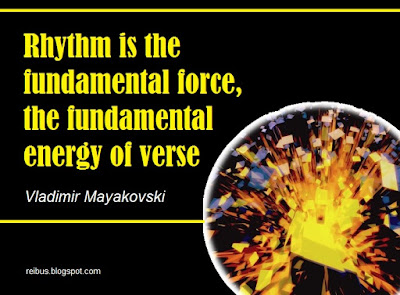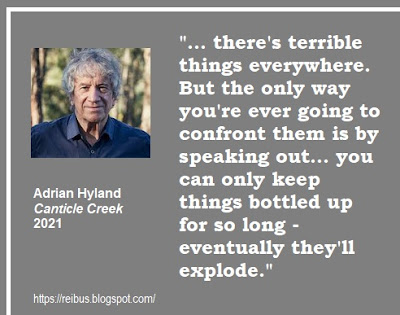Blog 210220 - Poetry
Poetry is inspirational. It is magical;
lyrical; metaphorical; figurative imagery; tension, rhythm and emotion. It is
all of those and much, much more! If you love poetry, you understand it.
Years ago I became entranced with poetry. As a
child I had learned children’s poems like Baa
Baa Sheep and Jack and Jill.
As I grew up I began writing my own poems. I fell in love with the ‘cats’ poems
written by T.S. Eliot: Andrew Lloyd Webber used the poems for his Cats
musical, and to sing them and see them on stage hooked viewers. I have recently
read a poem by Douglas Adams (author of The Hitchhiker’s Guide
to the Galaxy) written in his class at school in 1970
that seemed to sound so good (read it yourself!).
My personal poetry changed from enjambment to
villanelle to free verse to rhyme, yet I wrote my poems as stories, comedies,
songs, feminism, environmentalism and politics. For me, poetry tells my own
tales. This one I wrote in 1975, and it told just how I had felt after I had
been mistreated by a previous boyfriend.
Won’t somebody love me?
It doesn’t take much
A little attention, a
sweet gentle touch
I’m not extra pretty,
at heart I’m quite shy
When I’m down in the
dumps I quite often cry
Alone with my burden is
all I can bear
I want someone with me
with love I can share
So please, if you read
this, then answer my plea
I just want a guy with
enough love for me
I was 18 when I wrote this, and would soon
after that enrol in the Army. Some other of my youth poetry happened during my
Army career.
I had no ‘professional’ poetry training until I
enrolled in a BA course – I am now 63, had a stroke 6 years ago, and can still
write poems, but sometimes they take quite a lot of working on.
I read a few articles about using poetry within
the workplace, or for students in schools. One said that nurses can use poetry
to encourage their own compassion and empathy, and that would certainly help
them to communicate with their patients much better (Jack & Illingworth
2019, p.1). Another wrote about how some teachers include ‘social justice’
poetry into their classes, giving their young students the ability to express
themselves (Flint & Laman 2012, p.13). They had found that in 2010 poetry
had been acknowledged as a wonderful way to allow students to “reflect on
language, culture, experiences, and memories” and use the poetry
essential skills, such as “brevity, rhythm, focused content,
strong emotional connection, and powerful imagery”
(ibid., p.14).
Lilly Blue works with the Red Room Poetry
Company in NSW, and teaches her students poetry to enter the RRPC competitions
with their own poem written about talismanic items (Blue, 2016, p.29). Reading
some of the poems written by young students makes me want to congratulate them
– they will advance a lot more in poetry!
Before my stroke I started a website – which is
now closed after 7 years – which included some of my anti-rape poetry. My
second website – also now closed after 7 years – had pages to my poetry. I have
occasionally used my poetry in my blog. After my stroke I had moved up to
Redlands. I discovered a poetry group and would meet up with them each week.
Communicating with other people used to help me, but now I live a long way (for
me) from any poetry group. So I still write my own poetry, put it to one side
and re-write it.
Strand & Boland’s book was excellent for the
BA course, but there were other poems within it which I couldn’t relate to.
O’Driscoll wrote in an Irish Times article in 2000, reviewing Strand &
Boland. He mentioned, in the first paragraph, many of the technical meanings of
many poems: “villanelle, sestina, pantoum, sonnet, ballad, blank verse, heroic
couplet and stanza”. I certainly agree with his view that this book “provides a
feast for any reader gripped by a hunger for poetry's rhythms and revelations…”.
(O’Driscoll,
2000). Many new poets wouldn’t even know any of the technical meanings, and as
a poet from years ago I didn’t know any of these either, yet in the past couple
of months I have been able to see where I had started my poetry. The poetry
group I was with in Redlands drew me into ballad poetry, and that was the first
time I became interested in Banjo Paterson with his historical ballads.
It’s taken me years to get back into my poetry, but now I am
feeling more comfortable than I had been for a long time. These words are at
the end of one of my 2013 poems.
What's in it for me? That's my question now
I'm learning the answer, I've got the know-how
I'm learning the answer, I've got the know-how
Listen to my feelings, show me respect
And I'll give you more than you'd ever expect
And I'll give you more than you'd ever expect
Talk, listen, touch, feel, freedom to be
The person I am, the person that's "me"
The person I am, the person that's "me"
I think I still feel this way now too!
Blue,
L. 2016, “Poetry as a way of seeing: Risk, silence and attention”, Literary
Learning: the Middle Years, Vol. 24, Iss. 2, Australian
Literary Educators Association, NSW, Australia.
Flint,
A.S. & Laman, T.T. 2012, “Where Poems Hide: Finding
Reflective, Critical Spaces Inside Writing Workshop”, Theory Into Practice,
Vol. 51, The College of Education and Human Ecology, The Ohio State University,
USA.
Flood, A. 20 March 2014, Lost poems of Douglas Adams and Griff Rhys Jones found in school
cupboard (Douglas Adams 1970, "A
Dissertation on the task of writing a poem on a candle and an account of some
of the difficulties thereto pertaining"), The Guardian, accessed 10
January 2020: https://www.theguardian.com/books/2014/mar/19/lost-school-poems-douglas-adams-griff-rhys-jones
Jack,
K. & Illingworth, S. 2019, “Developing Reflective Thinking
through Poetry Writing: Views from Students and Educators”, International
Journal of Nursing Education Scholarship, De Gruyter, Manchester
Metropolitan University, UK.
O’Driscoll,
D. 2000, Of pantoums, villanelles and sestinas: The Making of a Poem, Irish
Times, Dublin, accessed 10 January 2020: https://www.irishtimes.com/news/of-pantoums-villanelles-and-sestinas-1.1113948
Strand,
M. & Boland, E. 2001, The Making of a Poem: a
Norton Anthology of Poetic Forms, W.W. Norton &
Company, Chicago, USA.



Comments
Post a Comment